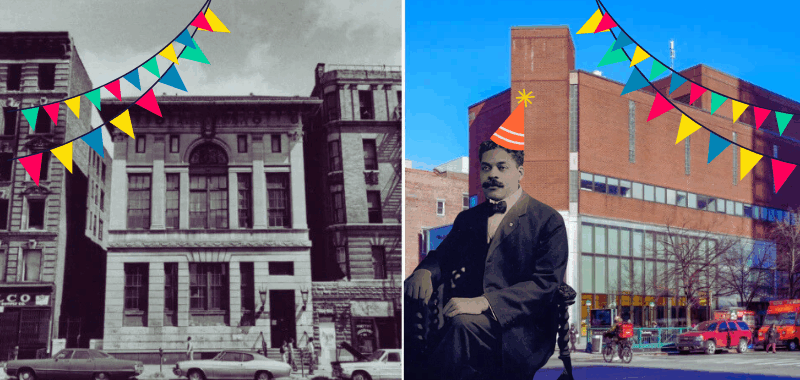On May 8, 1925—a hundred years ago tomorrow—one of the country’s largest collections of Black arts, literature, and history was born out of a Harlem brownstone.
Now called the Schomburg Research Center in honor of the late curator, Arturo Schomburg, this branch of the New York Public Library is home to a staggering archive. So it’s only fitting that the library observe its centennial in style.
The Schomburg is celebrating its own birthday with a year-long celebration. Events will include a summer festival, book giveaways, an in-library exhibition, an old-school block party hosted by none other than Slick Rick, a series of family dinners prepared from recipes in Arturo Schomburg’s personal cookbooks, and a limited edition library card. This will depict “Rivers,” the cosmogram set into the Center’s floor that’s home to Langston Hughes’ ashes.
Though the Schomburg is not the nation’s first institutional Black library—that title belongs to the Western Library in Louisville, Kentucky—it has been dedicated to archiving Black life since its inception. Sprouted as a branch of the 135th Street New York Public Library to “address the needs of a changing community,” the library drew international attention in 1926 when it absorbed the collection of “Black scholar and bibliophile” Arturo Schomburg. His nearly 3,000 volumes of Black historical matter created the baseline for today’s vast collection.
In 1972, the Schomburg became a research library. And in 1991, the space added an exhibition area and two massive performing art spaces. All the while, curators have grown its holdings and kept them open to a research public for the last hundred years. Today the Schomburg’s special collections include material from from more than 100,000 Black newspapers and magazines.
The library is home to the papers of James Baldwin, Malcolm X, Lorraine Hansberry, and Maya Angelou. The Black Arts Movement is heavily repped in the art and artifacts division. And thank to the oral history and video documentation project, card-carrying researchers can enjoy over 5,000 hours of recorded history—including accounts of the formerly enslaved.
Tomorrow’s exhibition kick-off will include a series of fireside chats with former and current collection directors and Harlem Renaissance historians. If you’re a bibliophile out of town, you can follow along with one of the center’s many virtual exhibitions and offerings here.
And of course, watch this space for news of when and how to throw down with Slick Rick.

